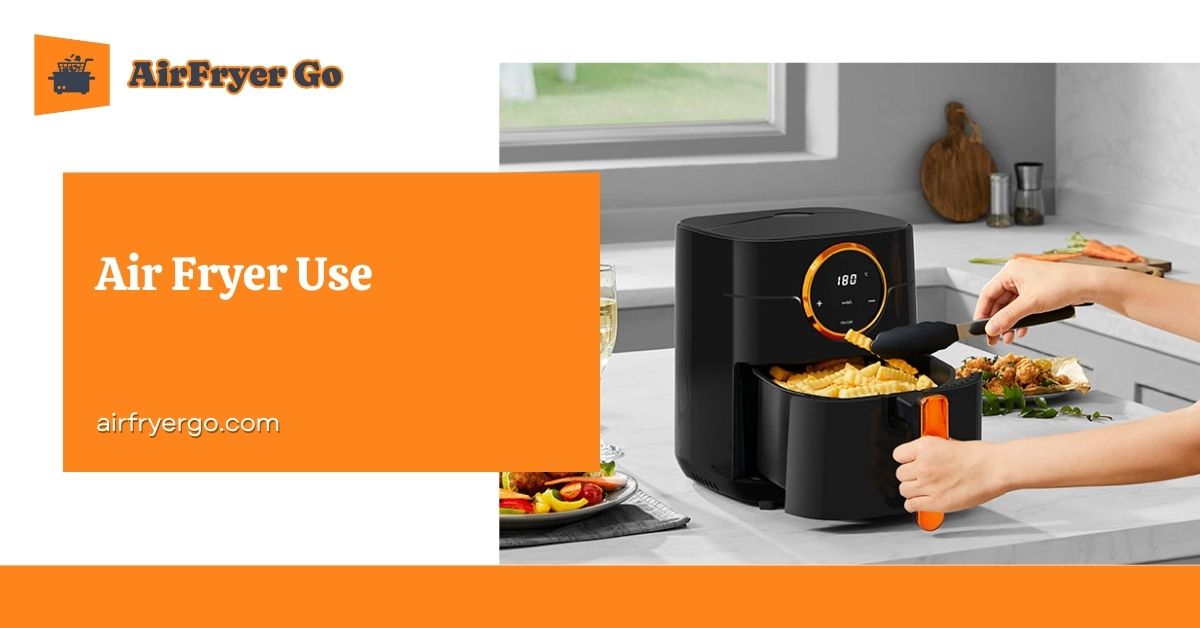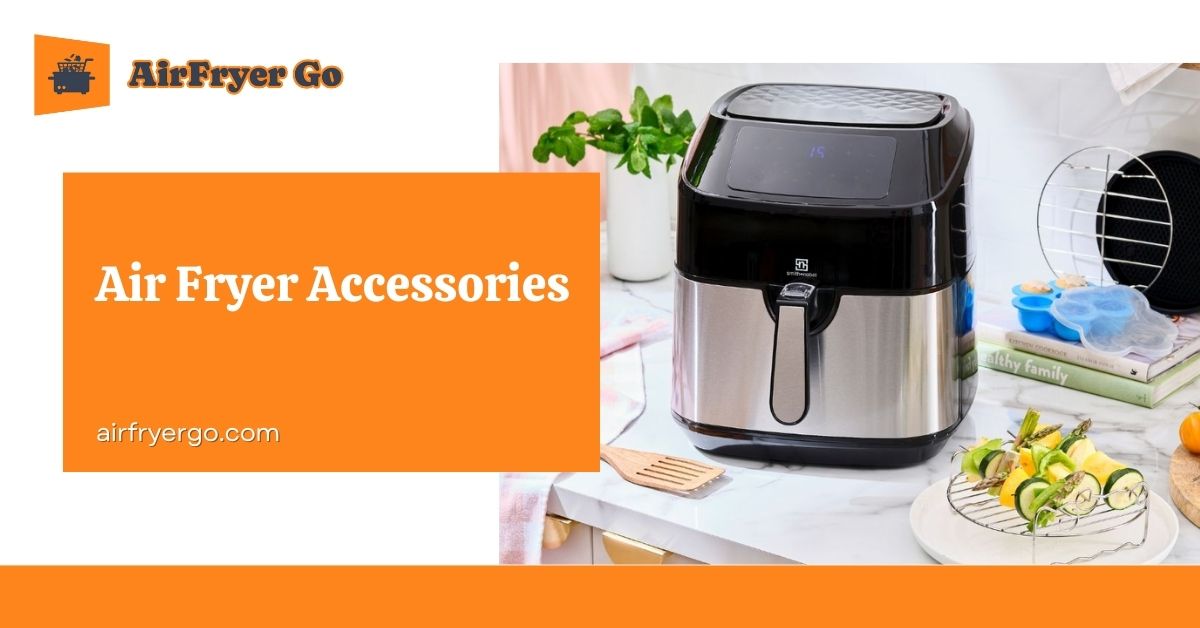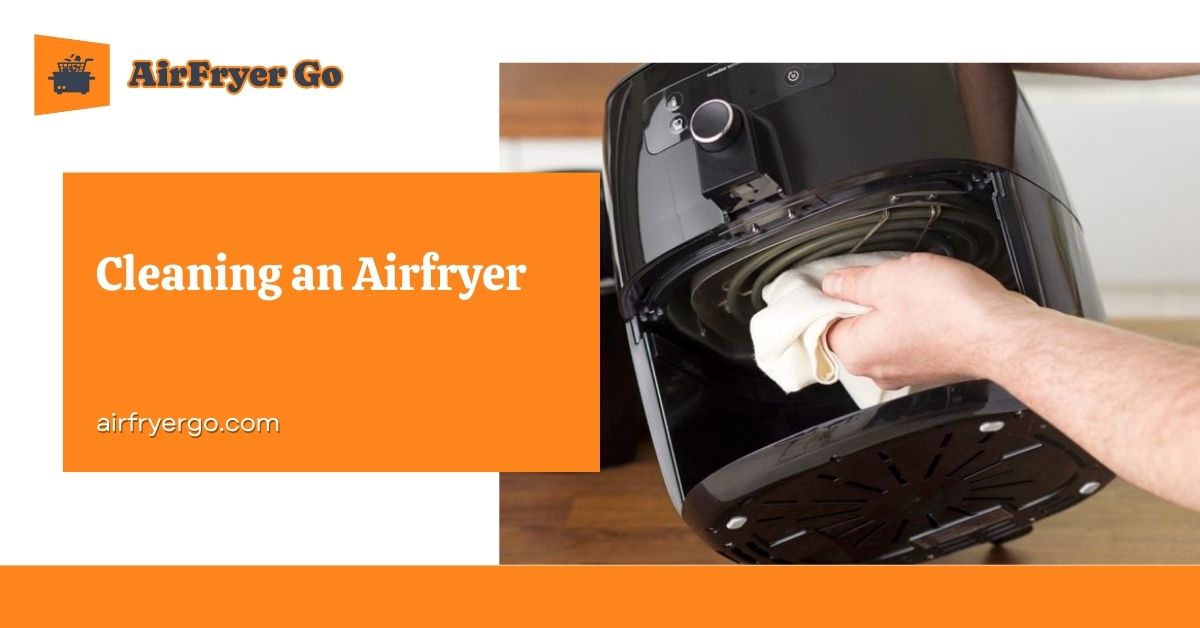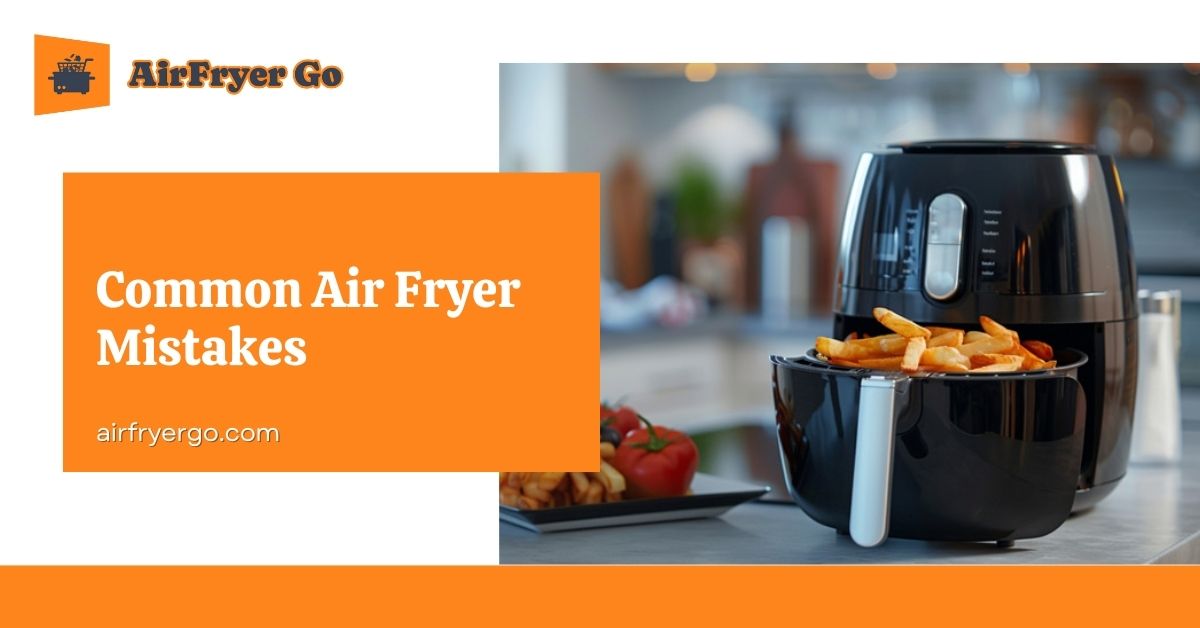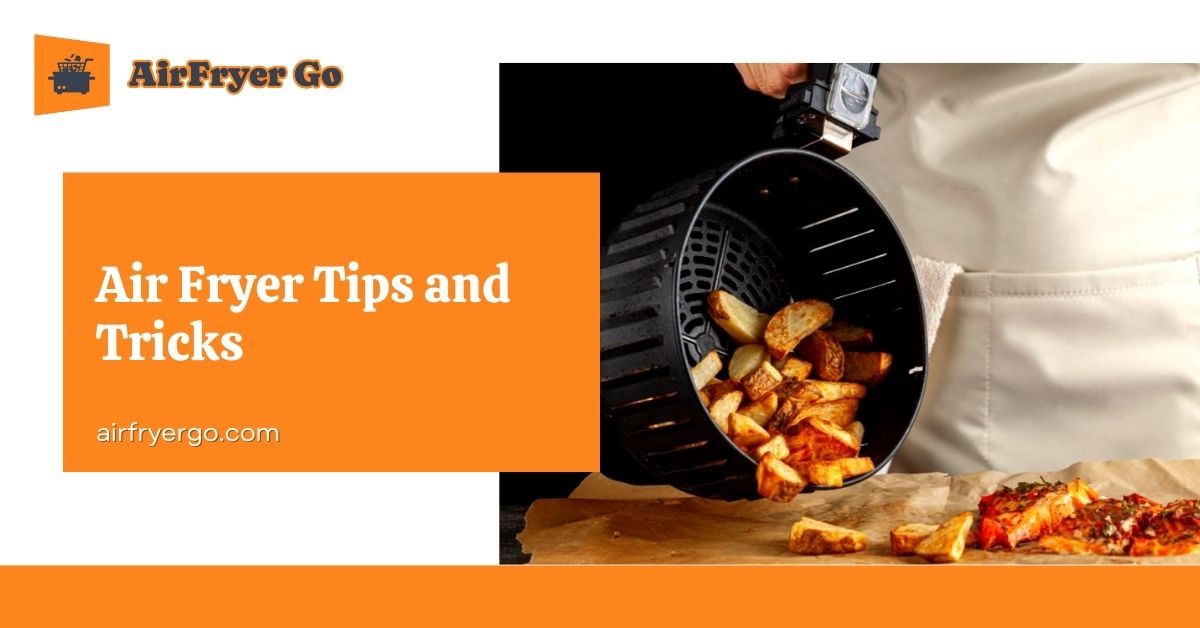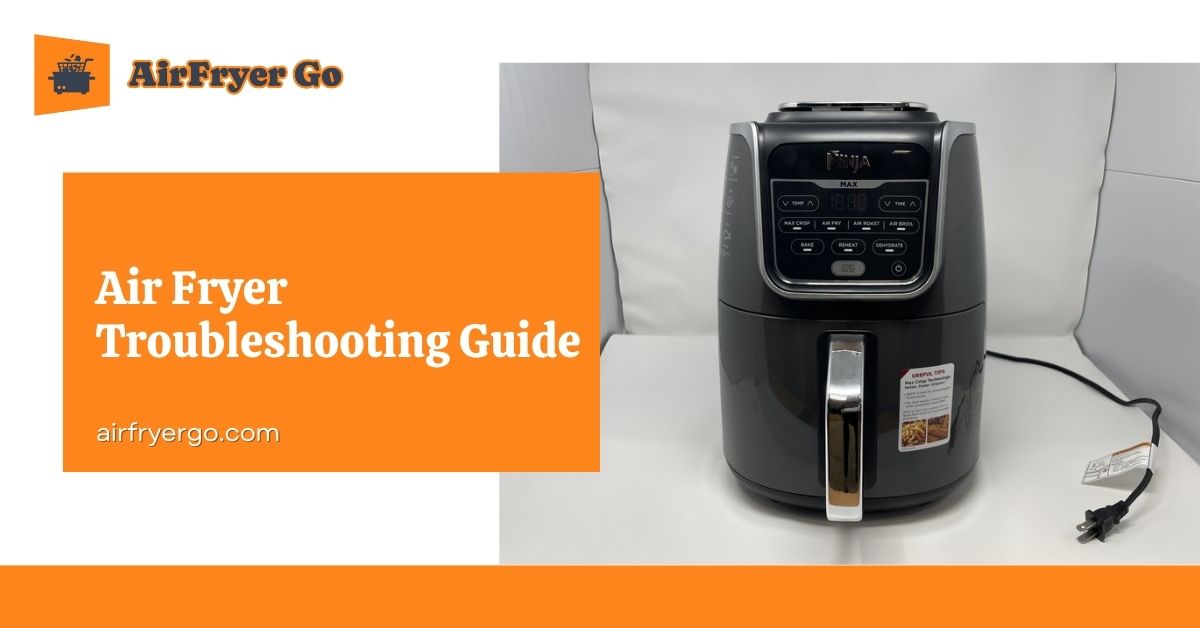The air fryer is quickly becoming a must-have kitchen appliance for its ability to cook food quickly and healthily. If you’re new to using one or want to optimize your cooking, this guide on Air Fryer Use is perfect for you. In this article, we will cover essential tips, a step-by-step guide, and helpful safety measures to ensure you’re making the most out of your air fryer, helping you create delicious and nutritious meals with ease.
What is an Air Fryer and Why You Should Use It

An air fryer is a kitchen appliance designed to cook food by circulating hot air around it, creating a crispy exterior similar to deep frying but with significantly less oil. The appliance uses rapid air technology to cook food faster than traditional methods, while also preserving the natural flavors and textures of the ingredients.
Why You Should Use an Air Fryer:
- Healthier Cooking: One of the primary reasons people choose to use an air fryer is that it requires very little or no oil, which helps to reduce the calorie count and overall fat content in your meals. This makes it an ideal option for those looking to maintain a healthier diet without sacrificing taste or texture.
- Quick and Efficient: Air fryers cook food quickly, significantly reducing cooking times compared to conventional ovens. This makes them perfect for busy individuals or families who need a fast meal without compromising on quality.
- Versatility: Air fryers are incredibly versatile. They can cook a variety of foods, from crispy fries and chicken wings to vegetables, fish, and even desserts. This makes them a great option for anyone looking to explore different cooking techniques and meal types.
- Ease of Use: Air fryers are user-friendly, with most models offering simple controls and preset cooking functions. You don’t need to be an expert cook to create delicious meals; just set the temperature and time, and the air fryer does the rest.
- Easy Cleanup: Many air fryers come with non-stick baskets and removable parts that are dishwasher safe, making cleanup after cooking a breeze.
Using an air fryer not only enhances your cooking experience but also contributes to a healthier and more efficient way of preparing meals.
Benefits of Using an Air Fryer

Using an air fryer comes with several benefits that can make cooking easier, healthier, and more enjoyable. Here are the key advantages:
1. Healthier Cooking
One of the main reasons people turn to air fryers is their ability to cook food with little to no oil. Unlike traditional frying methods that require large amounts of oil, air fryers use hot air circulation to cook food, making it crispy without all the added fat. This can help reduce calorie intake and make meals healthier, especially for those looking to lower their fat consumption.
2. Faster Cooking Times
Air fryers cook food much faster than conventional ovens. The rapid air circulation inside the appliance ensures that food cooks evenly and quickly, which is perfect for busy people or those in a rush. For example, air-fried chicken wings may take just 20-25 minutes, while the same wings would take longer in an oven or on a stove.
3. Versatility in Cooking
Air fryers are incredibly versatile and can be used to cook a variety of foods, from crispy fries and chicken nuggets to vegetables, seafood, and even desserts like cake or doughnuts. They allow you to experiment with different ingredients and cooking methods, making them suitable for a wide range of meal ideas.
4. Easy to Use
Air fryers are designed to be user-friendly, with most models featuring simple controls such as temperature settings and cooking timers. Some even come with preset programs for specific foods, making it easy for anyone—whether a beginner or seasoned cook—to prepare meals without a lot of effort or guesswork.
5. Crispy Texture without Deep Frying
One of the best features of an air fryer is its ability to produce crispy food similar to deep frying, but without the mess or excessive oil. Foods such as French fries, chicken tenders, and fish fillets come out crispy and golden, while maintaining a healthier profile.
6. Energy Efficient
Since air fryers heat up quickly and cook food faster than traditional ovens, they are generally more energy-efficient. You won’t need to preheat for long periods, and cooking times are shorter, which can help reduce energy usage over time.
7. Easy to Clean
Most air fryers come with non-stick baskets and trays that are easy to clean, and many are even dishwasher safe. This makes cleanup much quicker and easier compared to the grease and oil splatters associated with traditional frying.
8. Safer to Use
Air fryers are generally safer than deep fryers, as they don’t involve hot oil that can splatter or cause burns. With built-in safety features such as auto shut-off and cool-to-the-touch exteriors, air fryers offer a safer cooking environment, especially for families with children.
In conclusion, the benefits of using an air fryer are numerous—from healthier meals and faster cooking times to easier cleanup and increased safety. It’s a versatile kitchen appliance that can help you make crispy, delicious meals with minimal effort and maximum flavor.
How Does an Air Fryer Work?
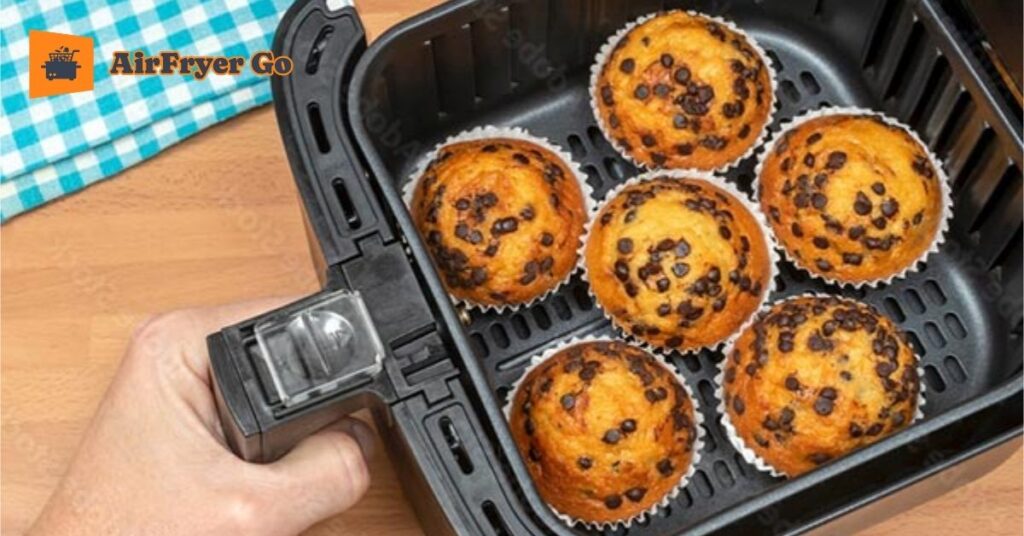
An air fryer works by using rapid air technology to circulate hot air around the food at high speeds. This process allows the food to cook evenly and develop a crispy, golden-brown exterior, similar to traditional frying, but with little or no oil. Here’s a breakdown of how it works:
1. Heating Element
At the top of the air fryer, there is a heating element that generates high heat. This element is usually made from a metal such as aluminum or stainless steel, which heats up quickly when powered on. The heat produced by this element is what cooks the food inside the air fryer.
2. Fan for Hot Air Circulation
Below the heating element, a fan is located, and it blows hot air rapidly around the food. The combination of hot air and the high-speed circulation mimics the process of deep frying, cooking the food quickly and evenly without the need for large amounts of oil.
3. Air Flow and Crisping
As the hot air circulates, it creates a crispy outer layer on the food by evaporating moisture from the surface. This mimics the effect of deep frying, where the oil heats the food, causing moisture to escape and creating a crispy texture on the outside while keeping the inside tender and moist.
4. Food Basket and Tray
The food is placed in a basket or tray that allows air to flow freely around the food. The design of these baskets ensures that the food is evenly exposed to the hot air on all sides, helping it cook evenly. Many air fryers have baskets that are removable, making it easy to shake or turn the food halfway through cooking for optimal results.
5. Minimal or No Oil
One of the key features of an air fryer is its ability to cook food with little or no oil. While traditional deep fryers submerge food in hot oil, an air fryer uses just a small amount of oil (if any), which is typically sprayed or brushed onto the food to enhance crispiness and flavor. This significantly reduces the fat content of the food while still achieving a similar crispy texture.
6. Temperature and Time Control
Air fryers come with temperature controls and timers that allow you to set the exact cooking conditions for different foods. You can adjust the temperature based on the type of food you’re cooking (typically between 180°F and 400°F) and set the timer to ensure it cooks for the correct duration. The appliance will automatically turn off once the cooking time is completed.
7. Safety Features
Air fryers often come equipped with safety features such as auto-shutoff when the cooking time is up and cool-to-the-touch exteriors to prevent burns. Some models also feature overheat protection to avoid damage to the appliance.
In summary, an air fryer works by circulating hot air around the food at high speeds, cooking it quickly and evenly. The result is food that is crispy on the outside and tender on the inside, using little or no oil. The ease of use, fast cooking times, and healthier cooking process have made air fryers a popular choice for many home cooks.
Air Fryer Use: Step-by-Step Guide

Using an air fryer can be a game-changer for your cooking routine, as it allows you to prepare crispy, flavorful meals quickly and with less oil. Whether you’re a first-time user or looking to improve your air frying skills, this step-by-step guide will help you get the most out of your appliance.
Step 1: Set Up Your Air Fryer
Before you begin cooking, make sure your air fryer is placed on a flat, heat-resistant surface. Ensure the appliance is not near any combustible materials and that there’s enough space around it for airflow. Open the basket or drawer and check if it’s clean and ready for use.
Step 2: Preheat the Air Fryer (If Necessary)
While many air fryers don’t require preheating, some models may benefit from it, especially when cooking frozen or thicker items. If your recipe calls for preheating, simply set the air fryer to the desired temperature and let it run for a few minutes. Most air fryers have an indicator light or sound that tells you when it’s preheated.
Step 3: Prepare Your Food
Prepare your food by cutting or seasoning it as needed. For optimal results, lightly coat your food with a small amount of oil, either by spraying it directly on the food or using a brush. This helps promote crispiness and enhances the flavor. If you’re cooking a large batch, consider shaking or flipping the food halfway through cooking for even results.
Step 4: Set the Temperature and Time
Place your food in the air fryer basket or tray. Adjust the temperature and cooking time based on your recipe. Most air fryers offer temperature settings between 180°F and 400°F. Cooking times will vary depending on the type of food and thickness, but they are generally faster than traditional methods. Use the built-in timer to set the cooking time, and be prepared to check on your food near the end to ensure it’s perfectly cooked.
Step 5: Monitor the Cooking Process
While your air fryer is cooking, it’s a good idea to check periodically to ensure your food is cooking evenly. If necessary, shake the basket or flip the food halfway through the cooking time to promote even crisping. Some air fryers come with a built-in alarm to remind you to shake or turn the food.
Step 6: End of Cooking Cycle
When the cooking time is up, your air fryer will usually beep to alert you. Carefully remove the food from the basket, using tongs or a heat-resistant spatula to avoid burning yourself. Keep in mind that the food will continue to cook slightly after being removed due to residual heat.
Step 7: Clean the Air Fryer
After cooking, let the air fryer cool down before cleaning it. Most air fryer baskets and trays are non-stick and dishwasher safe, but always check the manufacturer’s instructions for specific cleaning guidelines. Wipe down the exterior with a damp cloth, and make sure the interior is free of food debris. Proper cleaning after each use will help maintain the longevity of your air fryer.
Step 8: Store Your Air Fryer
Once cleaned and dried, store your air fryer in a cool, dry place. If you plan to use it regularly, leave it in a convenient spot on the counter. If you’re storing it for a while, make sure it’s unplugged and properly stored to avoid any damage.
Using an air fryer is straightforward and offers many benefits, such as healthier cooking and faster meal preparation. By following this step-by-step guide, you’ll be able to use your air fryer with confidence, ensuring delicious meals every time. Whether you’re making crispy fries, juicy chicken, or even desserts, your air fryer is a versatile tool that makes cooking easier and more enjoyable.
Essential Tips for Using Your Air Fryer Effectively

To get the best results and make the most out of your air fryer, there are a few key tips that will help ensure your meals turn out perfectly every time. Whether you’re new to using an air fryer or are looking for ways to improve your cooking, these tips will help you master the appliance and make your cooking experience smoother and more enjoyable.
1. Preheat the Air Fryer
While not all air fryers require preheating, many models perform better and cook food more evenly when preheated. Set your air fryer to the desired temperature and allow it to run for 2-5 minutes before adding your food. Preheating can help achieve the perfect crispy texture, especially for frozen or thick-cut foods.
2. Avoid Overcrowding the Basket
One of the most common mistakes when using an air fryer is overcrowding the basket. When you fill the basket too much, the air can’t circulate properly, leading to uneven cooking. For the best results, arrange your food in a single layer, leaving space between pieces. If cooking a large batch, consider cooking in multiple rounds or shaking the basket halfway through the cooking process.
3. Use a Small Amount of Oil
While one of the main benefits of an air fryer is that it requires little to no oil, a small amount can enhance flavor and crispiness. Lightly spray or brush a small amount of oil on your food before cooking. This is especially useful for foods that tend to dry out, such as vegetables or lean proteins. Avoid using excess oil, as it can create a greasy texture instead of the crispiness you’re looking for.
4. Shake or Flip Your Food
For even cooking, especially with foods like fries, chicken wings, or veggies, it’s a good idea to shake the basket or flip the food halfway through the cooking process. Most air fryers will require you to shake the basket at least once to ensure the food is evenly cooked and gets that crispy, golden texture on all sides.
5. Adjust Cooking Times and Temperatures
Every air fryer is a little different, and cooking times and temperatures can vary depending on your specific model and the food you’re preparing. Use the recommended times and temperatures as a guideline, but always monitor your food as it cooks. If you notice that it’s cooking too fast or slow, adjust the settings as needed.
6. Use Cooking Accessories for More Variety
Many air fryers offer optional accessories, such as baking pans, skewers, or racks, which can help you prepare a wider variety of meals. For example, a rack allows you to cook multiple layers of food at once, increasing your capacity and making meal prep faster. Experiment with these accessories to enhance the versatility of your air fryer.
7. Check Your Food Regularly
Because air fryers cook quickly, it’s easy for food to go from perfectly crisp to overcooked in just a few minutes. Check your food regularly, especially if you’re trying a new recipe. If you’re unsure of when it’s done, use a food thermometer to check the internal temperature of meats to ensure they are fully cooked.
8. Clean After Every Use
To maintain your air fryer and ensure it continues to work efficiently, clean it after every use. Most air fryer baskets and trays are non-stick and dishwasher safe, making cleaning relatively easy. Wipe down the exterior and check for any food buildup around the heating element. Keeping your air fryer clean helps it last longer and keeps it performing at its best.
9. Experiment with Different Foods
The air fryer is incredibly versatile, so don’t be afraid to experiment with different types of food. You can make everything from crispy snacks like fries and onion rings to main dishes like chicken, fish, and even baked goods. Try new recipes to discover the full potential of your air fryer.
10. Follow Recipe Guidelines, but Don’t Be Afraid to Adjust
Air fryer recipes are a great starting point, but don’t be afraid to adjust them based on your preferences. Cooking times, temperatures, and ingredients may vary based on the size and type of food, as well as the air fryer model you’re using. Start with a recipe, but feel free to tweak it to match your taste and the cooking experience.
By following these essential air fryer tips, you’ll be able to create perfectly crispy, flavorful meals every time. Whether you’re new to air frying or a seasoned pro, these strategies will help you achieve better results and make the most of your appliance. The air fryer is a versatile tool that can simplify your cooking process, and with the right techniques, you’ll be able to cook a variety of healthy, delicious dishes in no time!
Safety Tips for Using Your Air Fryer

Air fryers are generally safe to use, but like any kitchen appliance, it’s essential to follow specific safety guidelines to ensure you and your home stay safe while cooking. Here are some important safety tips to keep in mind when using your air fryer:
1. Keep Your Air Fryer on a Flat, Heat-Resistant Surface
Always place your air fryer on a stable, flat, and heat-resistant surface. This will prevent it from tipping over during use. Avoid placing it on surfaces that are prone to damage from heat, like wooden countertops or tablecloths. Ensure there’s enough space around the appliance for airflow and to prevent overheating.
2. Always Use the Air Fryer on a Well-Ventilated Area
Ensure your air fryer is in a well-ventilated area, away from walls or cabinets. This allows proper air circulation, reducing the risk of overheating. It’s also important to avoid placing the air fryer near flammable materials, as it can get very hot during use.
3. Avoid Touching the Hot Surfaces
The exterior and interior of your air fryer can get very hot during cooking. Always use heat-resistant gloves or oven mitts when handling the basket, tray, or other parts of the air fryer. Never touch the heating element directly, as it can cause burns. Let the appliance cool down before cleaning or moving it.
4. Keep the Air Fryer Clean
Food particles or oil build-up inside the air fryer can cause a fire hazard. Make sure to clean the air fryer regularly, especially after cooking greasy or sticky foods. Follow the manufacturer’s instructions on cleaning the basket, tray, and heating element. Always ensure the appliance is completely dry before storing it.
5. Do Not Overfill the Basket
When loading the air fryer basket, make sure to avoid overfilling it. Overcrowding can lead to uneven cooking and may increase the risk of food catching fire. For best results, ensure the air can circulate freely around the food for even and safe cooking.
6. Keep the Power Cord Away from Hot Surfaces
Always position the power cord away from the heating element or hot surfaces. The cord should never come in contact with any heated parts of the air fryer. If the cord is damaged, replace it immediately to avoid electrical hazards.
7. Never Leave the Air Fryer Unattended
While air fryers are safe to use, it’s still important to stay near the appliance while it’s in operation. This way, you can keep an eye on the cooking process, monitor for any unusual smells or smoke, and react quickly in case of an emergency.
8. Follow the Manufacturer’s Guidelines
Each air fryer model has different safety instructions and usage guidelines. Always refer to the user manual for specific operating instructions and maintenance tips. It’s crucial to adhere to these guidelines for proper safety and to avoid voiding the warranty.
9. Use Only Approved Accessories
Only use accessories that are approved or recommended by the air fryer manufacturer. Using incompatible accessories or items not designed for your air fryer can cause damage or increase the risk of fire. Stick to non-stick, air fryer-safe accessories to avoid safety hazards.
10. Keep Children and Pets Away
Air fryers can get extremely hot during cooking, and children or pets may inadvertently touch the appliance. Always supervise children and ensure that pets are kept away from the area while the air fryer is in use.
11. Check the Power Supply and Plug
Ensure the power supply and plug are in good condition before using your air fryer. If there’s any damage to the power cord or plug, do not use the appliance. It’s essential to plug the air fryer into a grounded outlet to prevent electrical mishaps.
By following these safety tips, you can enjoy the benefits of your air fryer without worrying about potential accidents or hazards. Keep your air fryer clean, monitor it while cooking, and always be mindful of its heat levels to ensure a safe and enjoyable cooking experience. With the right precautions, an air fryer is a fantastic addition to your kitchen, providing quick, healthy, and delicious meals.
Common Mistakes to Avoid When Using an Air Fryer

Air fryers can be a game-changer in the kitchen, offering a healthier way to enjoy your favorite crispy foods. However, as with any appliance, it’s easy to make mistakes that can affect the quality of your food or even damage your air fryer. To help you get the best results, here are some common air fryer mistakes to avoid when using:
1. Overcrowding the Basket
One of the most common mistakes is overcrowding the air fryer basket. When too much food is crammed into the basket, the air circulation is restricted, leading to uneven cooking and soggy results. Always give your food enough space to allow hot air to circulate around it. If you’re cooking a larger batch, it’s better to do it in multiple rounds or shake the basket halfway through.
2. Not Preheating the Air Fryer
Many air fryers require a short preheating time before cooking. While some models don’t explicitly need preheating, skipping this step can lead to uneven cooking, especially with frozen foods. Preheating ensures the appliance reaches the correct temperature, allowing food to cook evenly and crisp up properly. Always check your air fryer’s instructions on whether preheating is necessary for the best results.
3. Using Too Much Oil
While air fryers require much less oil than traditional frying methods, using too much oil can lead to greasy food. Excess oil can cause splattering or pooling inside the appliance, which can make it harder to clean. Lightly spray or brush a thin layer of oil on your food to get that golden, crispy texture without the excess grease.
4. Not Shaking or Flipping the Food
Many air fryer recipes require you to shake the basket or flip the food halfway through the cooking time. Neglecting this step can lead to uneven cooking and a lack of crispiness on some sides. For foods like fries, chicken wings, or vegetables, shaking or flipping ensures even exposure to the hot air, giving you a crisp and golden result on all sides.
5. Ignoring Cooking Times and Temperatures
Each air fryer model has slightly different cooking times and temperatures, and the size or thickness of your food can also impact how long it needs to cook. Failing to adjust the time or temperature based on your specific air fryer model and the food you’re preparing can result in undercooking or overcooking. Always start with the recommended times and temperatures, but don’t hesitate to make adjustments as needed.
6. Not Cleaning the Air Fryer Regularly
Over time, grease, food particles, and oil build-up inside the air fryer, which can affect its performance and the flavor of your food. Not cleaning the air fryer after every use can also lead to unpleasant odors or even a fire hazard. Make sure to regularly clean the basket, tray, and interior according to the manufacturer’s instructions. This will not only ensure better cooking results but will also extend the lifespan of your appliance.
7. Using Non-Air Fryer Safe Materials
Some people mistakenly use non-air fryer-safe materials, such as paper towels or plastic wraps, inside the basket. These materials can melt, burn, or cause a fire hazard. Always use materials specifically recommended for air frying, such as parchment paper or foil. If using foil, be sure it doesn’t block the air vents, which could affect airflow and cooking performance.
8. Relying Too Much on Pre-packaged Frozen Foods
While frozen foods like fries or chicken nuggets are convenient for air frying, relying too much on them can limit the versatility of your air fryer. It’s essential to explore a variety of fresh ingredients and experiment with recipes beyond frozen items. Fresh vegetables, fish, and even desserts can be perfectly cooked in the air fryer, allowing you to take full advantage of its potential.
9. Not Reading the Manual
Every air fryer model is slightly different, and using it without referring to the manufacturer’s instructions can lead to mistakes in cooking or maintenance. The manual typically provides crucial information about the air fryer’s capacity, specific temperature settings, and cleaning procedures. Always read the manual to ensure you’re using your appliance correctly and safely.
10. Cooking Without Checking the Food
Air fryers cook quickly, and while they’re more forgiving than traditional fryers, leaving food in too long can still lead to overcooking or burning. Many air fryers have a timer, but it’s a good idea to check the food towards the end of the cooking time to make sure it’s cooking as expected. If you’re unsure, use a food thermometer to ensure meat is cooked to a safe temperature.
By avoiding these common mistakes, you can ensure that you get the best results from your air fryer. Whether you’re cooking crispy fries, juicy chicken, or roasted vegetables, following these simple tips will help you make the most of your appliance. With a little practice and attention to detail, your air fryer can become an indispensable tool in your kitchen, providing quick, healthy, and delicious meals with minimal effort.
Easy and Healthy Air Fryer Recipes to Try
Air fryers are an excellent tool for cooking quick, healthy meals with minimal oil. Whether you’re looking to prepare a nutritious snack or a full meal, the air fryer can do it all, from crispy vegetables to juicy chicken. Below are some easy and healthy air fryer recipes that are perfect for beginners and seasoned air fryer users alike.
1. Air Fryer Crispy Sweet Potato Fries

Introduction: Sweet potato fries are a delicious, healthy alternative to regular fries. The air fryer gives them a crispy texture without the need for deep frying.
Nutritional Benefits: Sweet potatoes are high in fiber, vitamins A and C, and potassium, making them a great addition to any meal.
Ingredients:
- 2 medium sweet potatoes, peeled and cut into fries
- 1 tablespoon olive oil
- Salt and pepper to taste
- Optional: paprika, garlic powder, or other seasonings
Instructions:
- Preheat the air fryer to 375°F (190°C).
- Toss the sweet potato fries in olive oil, salt, pepper, and any additional seasonings.
- Place the fries in the air fryer basket in a single layer.
- Air fry for 15-20 minutes, shaking the basket halfway through for even cooking.
- Serve hot with your favorite dipping sauce.
2. Air Fryer Salmon Fillets

Introduction: This easy and healthy salmon recipe is rich in omega-3 fatty acids and can be prepared in less than 20 minutes.
Nutritional Benefits: Salmon is an excellent source of protein, omega-3 fatty acids, and vitamin D, which is great for heart health.
Ingredients:
- 2 salmon fillets
- 1 tablespoon olive oil
- Lemon slices
- Salt and pepper to taste
- Fresh herbs (optional)
Instructions:
- Preheat the air fryer to 400°F (200°C).
- Rub the salmon fillets with olive oil, salt, and pepper.
- Place the salmon fillets in the air fryer basket.
- Cook for 10-12 minutes, depending on the thickness of the fillets.
- Top with fresh herbs and serve with a side of roasted vegetables or salad.
3. Air Fryer Roasted Brussels Sprouts

Introduction: These crispy Brussels sprouts are a perfect side dish or snack. Roasting them in the air fryer gives them a crispy texture and a caramelized flavor.
Nutritional Benefits: Brussels sprouts are low in calories and high in fiber, vitamin C, and antioxidants, making them a healthy option.
Ingredients:
- 1 pound Brussels sprouts, trimmed and halved
- 1 tablespoon olive oil
- Salt and pepper to taste
- Optional: balsamic vinegar or lemon juice
Instructions:
- Preheat the air fryer to 375°F (190°C).
- Toss the Brussels sprouts in olive oil, salt, and pepper.
- Place the Brussels sprouts in the air fryer basket in a single layer.
- Air fry for 15-18 minutes, shaking the basket halfway through.
- Drizzle with balsamic vinegar or lemon juice for extra flavor.
4. Air Fryer Veggie Fritters

Introduction: These veggie fritters are packed with nutrients and make for a great snack or light meal. The air fryer makes them crispy without the added fat of deep frying.
Nutritional Benefits: Full of vegetables like zucchini, carrots, and peas, these fritters are a great source of fiber and vitamins.
Ingredients:
- 1 zucchini, grated
- 1 carrot, grated
- 1/2 cup peas
- 1/4 cup flour (whole wheat for a healthier option)
- 1 egg
- 1 teaspoon garlic powder
- Salt and pepper to taste
Instructions:
- Preheat the air fryer to 375°F (190°C).
- In a bowl, combine the grated zucchini, carrot, peas, flour, egg, garlic powder, salt, and pepper.
- Form the mixture into small patties.
- Spray the air fryer basket with cooking spray and place the fritters inside.
- Air fry for 10-12 minutes, flipping halfway through, until golden brown.
5. Air Fryer Chicken Tenders

Introduction: These crispy chicken tenders are healthier than deep-fried versions. They’re perfect for a family meal and are much lower in fat and calories.
Nutritional Benefits: Chicken is an excellent source of lean protein, and using whole wheat breadcrumbs adds fiber.
Ingredients:
- 2 chicken breasts, cut into tenders
- 1/2 cup whole wheat breadcrumbs
- 1/2 teaspoon garlic powder
- 1/2 teaspoon paprika
- 1 egg, beaten
- Salt and pepper to taste
Instructions:
- Preheat the air fryer to 375°F (190°C).
- In a shallow dish, mix the breadcrumbs, garlic powder, paprika, salt, and pepper.
- Dip each chicken tender into the beaten egg, then coat it with the breadcrumb mixture.
- Place the chicken tenders in the air fryer basket.
- Air fry for 10-12 minutes, flipping halfway through, until the tenders are golden and cooked through.
6. Air Fryer Apple Chips

Introduction: These crunchy apple chips are a healthy alternative to regular potato chips and make for a great snack.
Nutritional Benefits: Apples are high in fiber, vitamin C, and antioxidants, making them a great choice for snacking.
Ingredients:
- 2 apples, thinly sliced
- 1 teaspoon cinnamon
- 1 teaspoon sugar (optional)
Instructions:
- Preheat the air fryer to 350°F (175°C).
- Arrange the apple slices in a single layer in the air fryer basket.
- Sprinkle with cinnamon and sugar if desired.
- Air fry for 10-12 minutes, flipping the slices halfway through, until crispy.
7. Air Fryer Zucchini Chips

Introduction: Zucchini chips are a low-carb, healthy alternative to traditional potato chips. They’re light, crispy, and perfect for snacking.
Nutritional Benefits: Zucchini is low in calories and packed with vitamins A and C, making it an excellent option for a nutritious snack.
Ingredients:
- 2 medium zucchinis, thinly sliced
- 1 tablespoon olive oil
- Salt and pepper to taste
- Optional: parmesan cheese or herbs
Instructions:
- Preheat the air fryer to 375°F (190°C).
- Toss the zucchini slices in olive oil, salt, and pepper.
- Place the zucchini slices in the air fryer basket in a single layer.
- Air fry for 10-12 minutes, flipping halfway through, until crispy.
8. Air Fryer Quinoa Patties

Introduction: These quinoa patties are easy to make and packed with protein and vegetables. They’re a great option for a light lunch or dinner.
Nutritional Benefits: Quinoa is a complete protein, providing all nine essential amino acids, and it’s high in fiber and vitamins.
Ingredients:
- 1 cup cooked quinoa
- 1/2 cup grated zucchini
- 1/4 cup breadcrumbs
- 1 egg
- Salt and pepper to taste
Instructions:
- Preheat the air fryer to 375°F (190°C).
- In a bowl, combine the quinoa, zucchini, breadcrumbs, egg, salt, and pepper.
- Form the mixture into patties.
- Place the patties in the air fryer basket and spray with cooking spray.
- Air fry for 8-10 minutes, flipping halfway through, until crispy and golden.
9. Air Fryer Baked Apples

Introduction: A warm and healthy dessert, baked apples are filled with cinnamon and a touch of sweetness. They’re simple to make and a great option for a lighter treat.
Nutritional Benefits: Apples are full of fiber and antioxidants, making this dessert both delicious and healthy.
Ingredients:
- 4 apples, cored
- 1 tablespoon cinnamon
- 1 teaspoon honey (optional)
Instructions:
- Preheat the air fryer to 350°F (175°C).
- Stuff the apples with cinnamon and a drizzle of honey.
- Place the apples in the air fryer basket.
- Air fry for 15-18 minutes, until the apples are tender.
10. Air Fryer Roasted Carrots

Introduction: Roasted carrots cooked in the air fryer are sweet, tender, and caramelized, making them a perfect side dish.
Nutritional Benefits: Carrots are high in beta-carotene, fiber, and vitamin K, making them an excellent addition to any meal.
Ingredients:
- 1 pound carrots, peeled and cut into sticks
- 1 tablespoon olive oil
- Salt and pepper to taste
- Optional: herbs or honey
Instructions:
- Preheat the air fryer to 375°F (190°C).
- Toss the carrots in olive oil, salt, and pepper.
- Place the carrots in the air fryer basket.
- Air fry for 15-18 minutes, shaking the basket halfway through, until tender and caramelized.
These easy and healthy air fryer recipes are perfect for anyone looking to make quick, nutritious meals with minimal effort. Whether you’re cooking vegetables, proteins, or snacks, the air fryer makes it simple to enjoy a healthier lifestyle. Enjoy experimenting with these recipes!
Conclusion
In conclusion, cleaning and maintaining your air fryer is essential to keep it running smoothly and efficiently. Regular cleaning not only helps extend the lifespan of your appliance but also ensures your food is always cooked to perfection without any lingering odors or grease. By following the step-by-step guide and tips shared in this article, you’ll be able to enjoy your air fryer for many years to come.
Remember to clean your air fryer after each use, avoid common mistakes, and take extra care with maintenance. If you want to keep your air fryer in top condition, always store it properly and use the right cleaning products.For more tips, recipes, and product recommendations, visit AirFryer Go, where you’ll find everything you need to make the most out of your air fryer experience.

